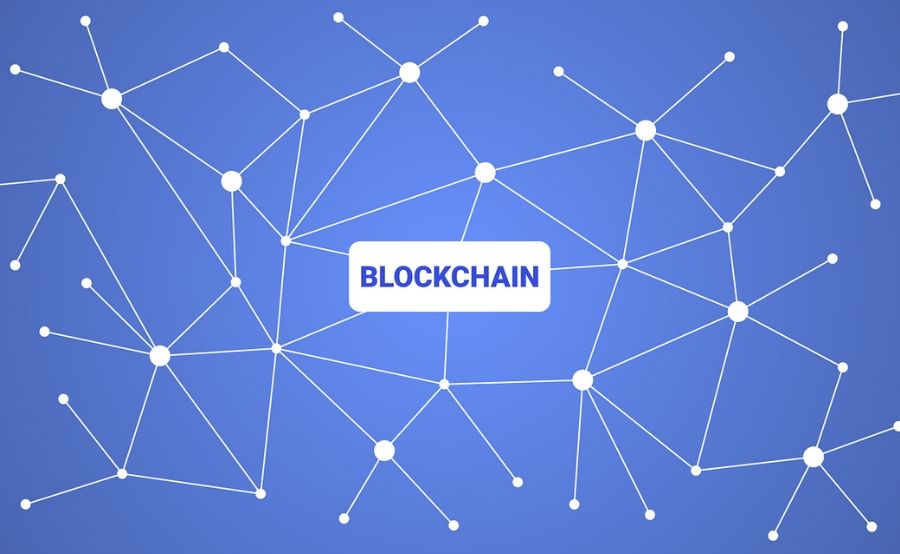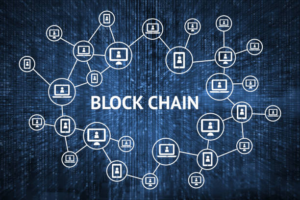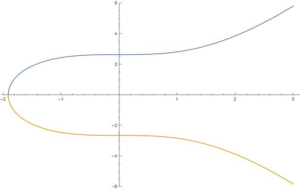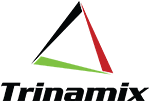
Introduction
Traditional supply chain is complicated. It takes days to make a payment between a manufacturer and a supplier, or a customer and a vendor. Contractual agreements require the services of lawyers and bankers, each of which adds extra cost and delay. Products and parts are often hard to trace back to suppliers, making defects challenging to eliminate. There are too many go-betweens. Suppliers, providers, and clients sometimes must interact via central third-party entities instead of directly with each other. Blockchain could be the answer to many of such issues.
From raw materials to distribution to after-sale support, understanding the location and flow of products within your supply chain is critical – and not only for maximizing efficiency. Today’s consumers demand transparency on where and how products are made. Regulators around the world also require information about supply chains – with penalties for noncompliance.
Beyond the need for information, complex supply chains depend on trust to function properly. But distrust between organizations has historically discouraged them from sharing or relying on shared data. A blockchain solution can remedy that with a shared, permissioned record of ownership, location and
movement of parts and goods. That shared record can increase efficiency, transparency and trust for any business.
Blockchain applications can help you address a wide range of supply chain challenges:
- How can we ensure that supply chain information is consistent and reliably maintained?
- Can we employ standards-based application programming interfaces (APIs) to simplify data transfer, application and network integration?
- What tools can best help eliminate fraud and error?
- How can we increase consumer and partner trust?
Where is the Gap
Nearly all the world’s leading companies run computerized enterprise resource planning (ERP) and supply chain management software. From connected manufacturing equipment to digital shipping notices and RFID scanning, products are tracked on computerized systems from their earliest origins,
often all the way to the recycling bin. Yet despite this huge investment in digital infrastructure, most companies have only limited visibility and insight into where all their products are at any given moment.
The culprit, in most cases, is the analog gaps that exist between systems within enterprises and across enterprise boundaries. Production may be recorded digitally, but the moment it moves to shipping, a PDF document is created for the shipping label that is little more than a software copy of a printout. The shipment may have its own digital number, but that number tells you where the box is and who signed for it, not what is in the box. And so on down the road: oceans of digital data but only islands of useful information. Even as supply chains have transformed, companies have not updated the underlying technology for managing them in decades. With blockchain technology, companies can rebuild their approach to supply chain management at the ecosystem level and go from islands of insight to an integrated global view.
What is Blockchain
Simplistically, a blockchain is a distributed, digital ledger. The ledger records transactions in a series of blocks. It exists in multiple copies spread over multiple computers, typically known as nodes. The ledger is secure because each new block of transactions links back to previous blocks in a way that makes tampering practically impossible. Because it is decentralized, the blockchain ledger does not depend on any single entity (like a bank) for safekeeping. The nodes connected to the blockchain network get updated versions of the ledger every time a new transaction takes place. The multiple copies of the ledger are the “truth” about every transaction made so far in the blockchain. Any attempt at falsification would mean having to tamper with all the copies at precisely the same moment. The chances of being able to do this in blockchain networks of any useful size are practically impossible.

Why is Blockchain more Secure
If we look at it deeply, blockchain and its security is built into its mathematical design. It is worth taking a brief look at the mathematics behind blockchain. As mentioned before, blockchain is basically a publicly available ledger where participants enter data and certify their acceptance of the transaction via an Elliptic Curve Digital Signature Algorithm (ECDSA). An elliptic curve is an equation such as y² = x3 + a x + b. In Bitcoin and most other implementations, a = 0 and b = 7, so this is simply y² = x3 + 7.

Figure 1: Elliptic Curve
ECDSA is a process that uses an elliptic curve and a finite field to “sign” data in such a way that third parties can verify the authenticity of the signature while the signer retains the exclusive ability to create the signature. The data that is signed is the transaction that transfers ownership. ECDSA has separate procedures for signing and verification. Each procedure is an algorithm composed of a few arithmetic operations. The signing algorithm makes use of the private key, and the verification process makes use of the public key. In a real blockchain application, where keys are usually 256 bits long, it dramatically increases the cost required for someone to “break” the system, such as by computationally attempting to recover the private key from the public key. It might be relatively easy to verify a signature, but it is very difficult to work back from publicly available data, such as the public key, to obtain the critical private key because of this complexity.
ECDSA is the essence of how blockchain applications work securely. Research has shown that the scheme has resisted some rather extensive testing for weaknesses, both mathematically and computationally. The few failures that have occurred in practice have generally been because users were not careful in protecting their private keys, or else they used a standard pseudorandom number generator to produce the private keys, which attackers then exploited.
Impact on Real World Supply Chains
The key blockchain features align with the basic needs for reliability and integrity in a supply chain.
Consensus
All the entities in the chain agree that each transaction is valid. For supply chain, it could be payment, warehousing, transport or delivery.
Provenance
The entities in the chain know where each asset originated. They also know who owned it before and at what time. For supply chain, assets can be anything from iron ore and wheat to cash, machines, and copyrights.
Immutability
No entity can tamper with an entry in the distributed ledger. With blockchain, it would not be possible to falsify a supply-chain payment transaction or the records of inventory, warehousing conditions, delivery times and dates, and so on.
Finality
The copies of the shared ledger all hold the same version of the truth. This works for blockchain network, supply chain included.
Blockchain Applications in Supply Chain
Unlike bitcoins, the applications for blockchain in supply chain are far more diverse than making or receiving payments. A large part of this diversity comes from the use of smart contracts. A smart contract is a software program that uses blockchain to execute an agreement. The program is stored on the blockchain so the smart contract can only function according to its programming. No fraud or other interference is possible. A smart contract can take input from a ledger and trigger an event. For example, after receipt of a payment as part of a transaction, the smart contract can trigger a delivery. Conversely, if a requirement (such as timely delivery or proper storage) is not met as expected the smart contract can trigger a penalty or similar sanction.
Third-party go-betweens are not necessary for the execution of smart contracts. Manual checking of conditions and events are obsolete endeavors. A software program that runs automatically, using information that is guaranteed by the blockchain to be correct, saves both time and money.
Automotive Supplier Payments
Blockchain allows the transfer of funds anywhere in the world without the need for traditional banking transactions, as transactions are made directly between payer and payee. It is also secure and rapid; taking minutes, compared to days for ACH payments, for example.
Meat Traceability
Companies can use distributed ledger systems (blockchains) to record product status at each stage of production or transportation. The records are permanent and immutable. They make it possible to trace each product to its source. (Refer to our earlier article on this topic at http://bit.ly/2Il6ze0)
Electric Power Micro-grids
Smart contracts are being used to redistribute excess power from solar panels. “Transactive Grid”[1] is an application running on blockchain to monitor and redistribute energy in a neighborhood micro-grid. The program automates the buying and selling of green energy to save costs and pollution. The process uses the Ethereum blockchain platform, designed specifically for building and executing smart contracts.
RFID-driven Contract Bids and Execution
RFID tags are commonly used in supply chain to store information about products. IT systems can read the tags automatically and then process them. Therefore, the question is – why not use them for smart contracts in logistics? The possible setup could be as follows. RFID tags for cartons or pallets store information on delivery location and date. Logistics partners run applications to look for these tags and bid for a delivery contract. The partner offering optimal price and service gets the business. A smart contract then tracks status and final delivery performance.
Tokenizing the Shipping Industry with Ethereum
Hong Kong-based company 300Cubits set out in 2018 to solve an expensive and lingering problem in the container shipping industry—the preponderance of no-shows, when shippers fail to deliver cargo booked on a container vessel, and rolling, which is the outcome of shipping lines’ choice to safeguard vessel utilization by overbooking to compensate for expected no-shows.
The 300Cubits response to the problem was to issue a TEU cryptocurrency and distribute a quantity of the tokens to shippers and shipping lines in 2018. Participants in the scheme use 300Cubits’ blockchain solution, based on Ethereum, to make deposits using the tokens when cementing a shipping transaction (the contract). The shipper and the shipping line both deposit a token in the blockchain when the shipper books cargo onto a sailing. To recover their escrowed tokens, both the shipper and the shipping line must honor the booking. If the shipper does not present the cargo in time for loading on the vessel, the shipping line can recover its token – along with the shipper’s token – from escrow. Similarly, if the shipping line fails to transport the shipper’s cargo as agreed, the shipper receives both deposited tokens.
While 300Cubits issued the initial batch of tokens, free of charge, to participating shippers and shipping lines, it sells subsequent batches for payment in fiat currency, ensuring that the tokens acquire monetary value. This value ensures financial consequences for shippers or shipping lines that renege on a booking. A smart contract, executed using the 300Cubit’s solution, automatically assigns tokens when a booking is made and reassigns them based on the outcome.
Walmart’s Blockchain Traceability Drive Continues
Since we first reported on Walmart’s early explorations of blockchain for traceability, which focused on the Chinese pork supply chain, the retail giant has continued investing in the technology, in partnership with IBM, and recently announced that it would require its suppliers of green vegetables to join in by September of 2019.
The move follows an outbreak of E. coli in the US last year, the source of which turned out to be a variety of lettuce grown in Arizona. Walmart was one of the grocery chains that had to remove the lettuce from its shelves during the food safety scare, even though there was no clear indication that the product came from the affected location.
The removal of the product from Walmart’s shelves was purely a safety precaution, necessary because it would have taken as long as seven days to trace where the lettuce originated. In the future, such an issue will not occur, because with all suppliers using the IBM Food Trust blockchain, the timescale for tracing a shipment’s source will contract to a mere two seconds!
Blockchain and Internet of Things
One suggestion is for smart contracts to manage rentals of driverless cars. A smart contract could check for rental payments. If there has been no payment or the rental agreement reaches the end of its term, the smart contract could lock the car and tell it to drive itself back to the rental car company’s premises.
Oracle’s Blockchain Platform as Solution to the Challenges of Blockchain Implementation
Blockchain of course, is still an emerging technology and is, therefore, not without its share of potential issues. Enterprises that want to harness blockchain power for their supply chain will need to watch out and be ready for the following challenges:
- Setup & provisioning
- Security
- Infrastructure
- Integration with other business systems
- Disaster Recovery
- Backup
- Scalability
Oracle Autonomous Blockchain Platform is the only enterprise grade managed service with 99.95% availability SLA, and enterprise grade hardened infrastructure. Oracle Autonomous Blockchain Platform provides the following features:
- Enhanced security
- Built in disaster recovery
- Continuous ledger backup
- Elastic scaling of resources
- Prebuilt integrations with Oracle’s enterprise applications as well as third party apps, thereby improving time to market by months
- Pre-assembled with faster time to implement blockchain networks reducing cost and setup times from weeks to minutes
- Deployment choice – public and private clouds
- Reliability
- Scalability
Trinamix as a value partner in Blockchain Initiatives
Trinamix, the leading solution provider of Oracle cloud platform-based supply chain solutions, is working with Oracle and other partners in blockchain space, in United States, APAC and Japan to deliver advanced technology solutions to customers using Oracle IOT, AI and Blockchain apps and other cloud technologies and platforms. Trinamix’s Industry 4.0 Labs are used by customers and network partners to showcase industry specific use cases that utilize advanced technologies and establish how they can be used by customers in transforming their digital supply chain and get to the next level of visibility and control of their manufacturing and distribution processes. Trinamix is leading multiple customer POC’s and design thinking initiatives already and is steadily making a niche for itself in the domain. Trinamix offers Industry 4.0 design thinking, Business Architecture, Proof of Concepts, Adoption Roadmap and Value Integration engagements along with Oracle IOT / AI / Blockchain apps related implementation services.
About Trinamix
Headquartered in California (USA) with offices across the globe, Trinamix is one of the leading implementation specialists for Oracle Cloud Applications, Oracle Value Chain Planning and E-Business Suite. Trinamix is recognized for customer focus & passion for excellence in solution delivery that ensures clients achieve their vision of an integrated, orchestrated and seamless business process. Trinamix offers a unique approach of implementation that incorporate best practices for processes and technology making us a leader in implementing Oracle solutions to enable supply chain planning and execution. Trinamix offers a comprehensive range of services to support our customers’ ongoing success and innovation. Visit us at http://www.trinamix.com/ for further information and help.
[1][1] TransActive Grid is a Brooklyn, NY, based software company that develops a cryptographically secure, peer to peer platform for the exchange of energy, deployment of smart contracts and management of Distributed Energy Resources
- DisclaimerThis article is produced by Trinamix as general guidance. It is not intended to provide specific advice on your circumstances. If you require advice or further details on any matters referred to, please contact your Trinamix representative.
About the Author

Joydeep is Associate Director – Service Delivery & PMO in Trinamix.
He is a proven IT program portfolio leader with 18 years of experience in healthcare, pharmaceuticals, retail, and technology industries. He has experience in leading large-scale, complex and transformative business investments that apply technology (IoT, blockchain etc) to business opportunities that meet business needs.
He is a graduate of Indian Institute of Technology where he completed his Bachelors with merit based Government scholarships. He completed his MBA from University of Warwick in the UK with a fully paid Commonwealth Scholarship.
Joydeep currently lives in New Jersey with his family.

